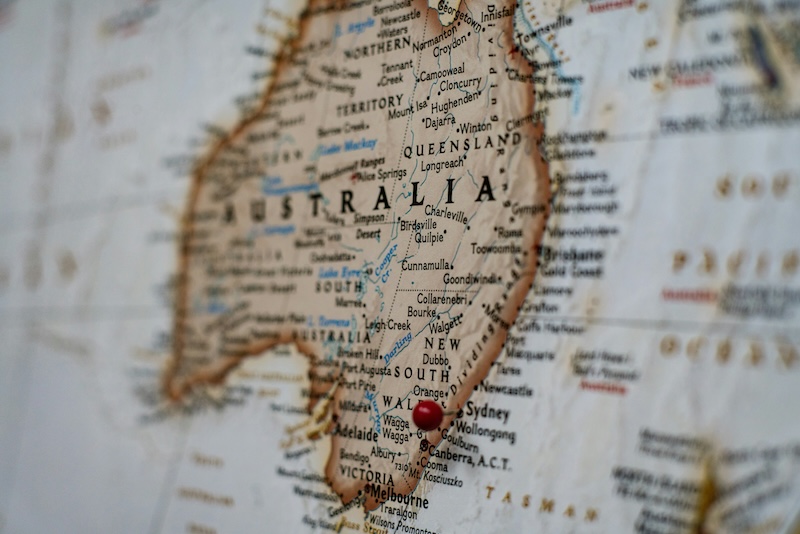Australia’s economy is outperforming on the global stage and its resilience has been misrepresented by pundits in the media, writes Alan Austin.
Right now, only one nation in the world enjoys inflation below 3%, the jobless below 4% and median wealth per adult above US$250,000. That is Australia.
Only two countries have survived the last two years without any negative quarters of GDP growth and kept average wealth per adult above US$540,000. Australia and the USA.
Only one economy has generated consecutive surpluses – in 2022-23 and 2023-24 – after nine consecutive deficits. Australia. And only two nations are in budget surplus, have triple A credit ratings and have reduced debt to GDP two years running: Australia and Denmark.
Regrettably, most Australians don’t know how difficult global conditions have been and how well the Albanese Government is navigating them.
So how many advanced economies are in budget surplus, have the jobless below 4% and inflation in the sweet spot between 2 and 3%?
Few know this because economics reporters are single-mindedly committed to deceiving voters into believing the Coalition manages the economy better than Labor. The answer is three: Japan, the Czech Republic and Australia.
Economic falsehoods effective
The newsrooms are succeeding magnificently in preventing voters seeing how rapidly the economy is recovering from the dismal Coalition years of constant all-time worst outcomes.
A national Resolve poll published last month by the Nine newspapers shows the Liberal Party had a 41–27 lead over Labor on economic management. That is up from 38–26 in the previous poll, confirming the effectiveness of the manipulators. If the media had done their job and reported actual outcomes, those numbers would be reversed.
The inflation chart, for example, is an impressive one for Labor and highly embarrassing for the Coalition. It shows monthly inflation at 6.12% when the Coalition left office and now down to 2.15%, the third month below the Reserve Bank’s upper limit of 3.0%. See chart below.
Tables from the Organisation for Economic Cooperation and Development (OECD) confirm Australia’s inflation is well below the average of all advanced economies, which is currently 3.76%.
Yet according to that November Resolve poll, voters rank the Liberals ahead of Labor 35–28 on keeping the cost of living low. That’s up from 31–24 in the previous poll. Extraordinary!
Poverty alleviation measures
All the published indicators confirm poverty in Australia, while still affecting far too many, is now at the lowest level in history.
Calls for emergency assistance to the national debt helpline (NDH) in November were 12,230, a decline from the October tally of 12,979 calls, and well below the average over the first ten months of the year.
Previously, those calls have been far more frequent and expressed much deeper distress. Calls in November 2017, the first year for which we have NDH records, numbered 14,829. This increased in November 2018 to 15,741, then declined in November 2019 to 14,196.
If we regard the pre-Covid period 2017 to 2019 as pretty normal times, the situation today is much better. This is bolstered by all other poverty measures and also by multiple indicators of expanding wealth from the Bureau of Statistics, the Finance Department, the Reserve Bank and the international agencies.
Homeless clients seeking short term emergency accommodation are steadily declining. JobSeeker claimants are now down to 5.16% of the labour force, the lowest on record.
Consumer spending nationally on cafes, restaurants, cosmetics and overseas trips are at all-time highs both in dollars and as a share of retail sales. Gross profits in the retail sector are booming.
False media narratives
The newsrooms have largely succeeded in convincing voters that:
(i) the areas where Australia now leads the world don’t matter much.
(ii) government spending is too high. It isn’t. As a percentage of GDP, both of Labor’s final budget outcomes showed spending well below Coalition levels.
(iii) a per capita recession renders citizens poorer. It simply doesn’t.
(iv) Australia is in a cost of living crisis. It isn’t. The crisis impacted the nation between late 2021 and mid 2023. Its aftermath in higher grocery prices, higher rents and more costly energy will, of course, continue for a decade. But inflation is no longer surging. Costs of rent, energy and most goods are now steady or declining. House prices are tumbling.
(v) high interest rates are hurting home buyers. The reality is mortgages have always been burdensome. Today is arguably no worse.
Millions of Australian home owners took out housing loans in the ten years 1973 to 1982 and repaid the principal and interest over the following decades.
They started with interest rates between 7% and 14%, then saw them go higher, peaking above 19% in 1989. In the entire twenty year period 1973 to 1992 interest rates rarely fell below 7.0%.
Those home buyers could only dream of 4.35%. They could not imagine a regime of 16 years below 5.0% – which is what current mortgage holders are enjoying.
Christmas cheer?
All economic tables published this year by the International Monetary Fund, the OECD and the World Bank show Australia is climbing all rankings under Labor after tumbling year after year under the Coalition.
So life in Australia is good and getting better. By refusing to report this accurately, the mainstream newsrooms are doing a great disservice.
Alan Austin is a freelance journalist with interests in news media, religious affairs and economic and social issues.


